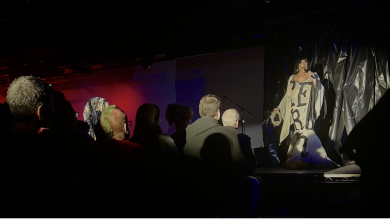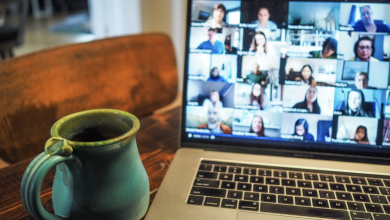Diva Cups: An Underrated Asset to the Menstruating Community

Image: Diva Cup and the Keeper, via Wikimedia Commons
In recent years, I have become increasingly aware of the stigma surrounding sexual and reproductive health, specifically when conversations are centered on the topic of menstruation. Societal discourses about this subject often perpetuate problematic notions about the relationships between menstruation, “womanhood,” and sexual reproduction, by hinting at the inseparable, interchangeable nature of these three phenomena. Often, menstruation is portrayed as a “gateway into womanhood,” and especially as a means to an end (childbearing). Consequently, those who menstruate learn about their menstrual periods largely within the context of sexual reproduction. Additionally, this erasive narrative overlooks the traumatizing experiences of trans men, who no longer identify with their menstruating bodies.
Conversations with parents about menstruation often begin in pre-adolescence, a stage of life that, for most women, is marked profoundly by their first-ever period. However, what is less talked about are the subsequent feelings of shame or embarrassment that may surface for people after this ordeal. In spite of our socialization, we should not treat the topic of menstruation with embarrassment or shame. I find it curious that cis women (including myself) often tiptoe around this subject, even when we find ourselves around other menstruating persons. The stigma is such that when we operate within an “appropriate” context (such as publicly handing an unused and wrapped tampon to a friend; excusing ourselves from class to privately deal with menstrual hygiene; or buying menstrual products at a convenience store), we still behave awkwardly.
In light of this phenomenon, I urge people to remember the following: it’s a tampon, not a machete. Stop hiding your menstrual paraphernalia for the sake of concealing a notion that we are all blatantly aware of: periods are a recurrent, natural thing that happen to people, and that’s okay.
Earlier this week, I met with second years Anne Wasserman, Sabrina Liu, and Carmen Davila to converse about this ‘“unconventional’” topic. All three interviewees agreed that this emotional phenomenon was an alarmingly universal experience, each sharing a snippet of what it was like coming to terms with the commencement of their menstrual cycles.
Davila, who grew up with two brothers, said that she “was just embarrassed to go to the bathroom and get a tampon [because] it was just a weird situation.” Additionally, Davila’s mother “never really talked about [menstruation]” and didn’t allow her to wear tampons all throughout high school, which caused the prolonged sense of isolation and shame that, until recently, she associated with menstruation. In spite of her mother’s conservative outlook on tampon use, however, Davila was introduced to the subject of menstruation at a fairly early age. “I learned about periods in, like, third or fourth grade. I went to a public school [in New Jersey] so we had health classes since [elementary school], ‘till middle school,” she told me.
On the other hand, Wasserman explained that her “mom is a pretty open, hip-and-happening person,” yet because she is from a slightly “older generation,” the two never really talked about menstruation in depth. Liu, who is a Chinese-American student from Texas, offered an alternative perspective on discussing puberty with her parents: “Traditionally, I guess, Asian or Chinese families– we never talk about sex, periods, or anything. I didn’t get the ‘birds and the bees’ at all. So, I was like, what is this? In the sixth grade, when stuff was happening, we had health class [and] videos about [sex education].” Eventually, all three women felt sufficiently comfortable to approach their mothers for advice about tampon or menstrual pad use, despite their divergent cultural backgrounds.
Wasserman, Liu, and Davila are unabashed proponents of menstrual cup use, an alternative means to the conventional pad-and-tampon dichotomy that dominates the menstrual hygiene industry. Last winter, the three women teamed up with other friends to create “The Diva Cup Diary,” a blog which details their experiences transitioning from tampon and pad use to Diva Cups. This popular brand of menstrual cups (available both online and at pharmacies or convenience stores nationwide) is an underrated asset to the menstruating community. In our interview, we discussed issues of sanitation, the importance of fostering open dialogues about menstruation, menstruation literature, and memorable adolescent experiences involving menstrual periods.
In discussing the benefits of Diva Cup use, Davila was quick to draw attention to the financially unsound aspects of tampon and pad use: on average, menstruating American women (70 percent of whom admit to regular tampon use) are estimated to spend a whopping $5,600 on these products in their lifetime. “There is a good amount online about Diva Cups but not much intense detail. We are very detailed in our blog and we want people to ask us questions,” said Wasserman, founder of the Diva Cup Club at UCLA. Wasserman was inspired to create this student organization by the Diva Cup Diary, a personal blog dedicated to the discussion of contributors’ experiences using menstrual cups. “They’re the most prominent [brand], so that’s why we chose Diva Cups specifically,” said Wasserman, explaining their collective decision to utilize one menstrual cup brand over others.
The Diva Cup Club is a means of responsibly and collectively confronting the subject of menstruation (and all that it entails). Wasserman passionately declared her interest in spreading constructive sexual health information, stating that she is frustrated by the dismissive tone that is often adopted by her peers whenever they discuss their periods. She challenges the idea that our periods are “just science,” asserting that they are in fact active, cyclical processes that affect our moods and reflect our ties to the natural world.
Our conversation about Diva Cups left me with one question: if menstrual cups are as great as these women say, why hadn’t I heard more about them prior to this interview? Few people receive significant exposure to menstrual cup advertising, which marginalizes these products (and their consumers) and influences our societal approach to the subject of menstrual hygiene. Instead popular tampon companies (namely Tampax, Playtex, and U By Cotex) have successfully established the tone for the marketing of menstrual products.
Recently tampon advertisements, guised as female-empowerment ad campaigns, have “redefined” what it means to menstruate. These ads depict women who, by performing as high-functioning, productive, and physically active beings while on their periods, defy conventional notions about menstruation. Despite their unanimous appraisal of this newfound portrayal of menstruation and women’s empowerment, Wasserman, Liu, and Davila still argue that menstrual cups are simply more practical for people who live highly active lifestyles.
There is hope for us all yet: these fellow UCLA students, aiming to spread awareness and destigmatize “period talk” amongst their peers, will continue to engage students in a counter-discourse that normalizes the use of menstrual cups. Additionally, pop culture has increasingly done its part to dismantle pervasive misinformation and toxic stigmas surrounding the issue of menstruation, as a part of a larger conversation about health. For instance, contemporary coming-of-age books (such as Judy Blume’s “Are You There God? It’s Me Margaret”) and TV shows (such as “Degrassi: The Next Generation”) have helped to construct a more comfortable and open discourse about menstruation. These are a means of teaching young adult audiences that they not only can but should speak freely about their emotional, sexual, and reproductive health.




